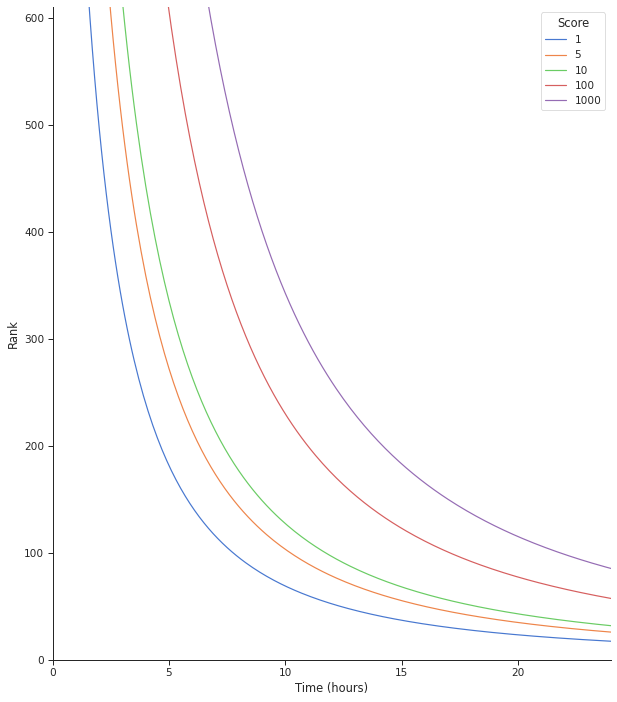

Yeah - though I had thought that still the one should be higher than the other, even if the numbers are small. In the actual equation, this would be multiplied by a scaling factor of 10000, though. (See the code discussion in the other comments). Though, in this case, the rank would still be very close to zero.
What I had missed is that, in the actual code, the equation is wrapped in floor() and returns an integer. So both are treated as rank = 0 and maybe randomly sorted.
The question is why are rank 0 posts showing up at all? In my other comment, if you do the math, I think that it should take quite a bit of time for any post with an appreciable score to decay to a rank of zero. Yet we see that these sorts of old posts are appearing relatively high in the hot feed.
One possible answer was suggested in another comment – it may have to do with how often the scores are recalculated for older posts, and if some have not decayed to zero by the time that the score recalculation stops, they might persist with a non zero score until the instance is restarted. I’m still not sure that that is the right answer, however, because I am guessing that instances like lemmy.world (which I am using) have been restarted recently with the various hacking attempts?



A farmer coughs in your face, and then you slowly get sick and eventually die.